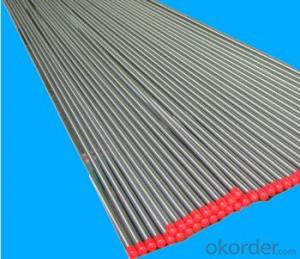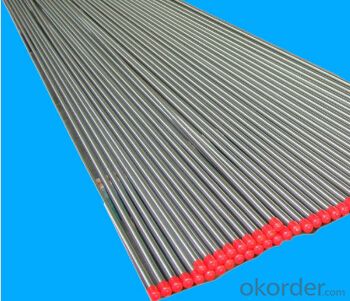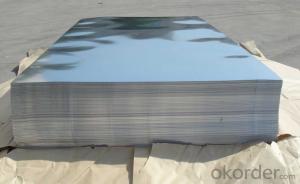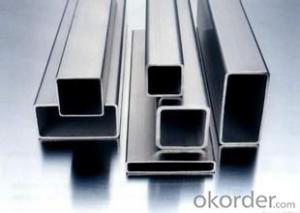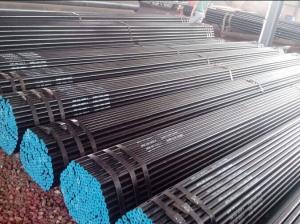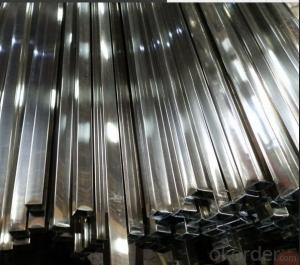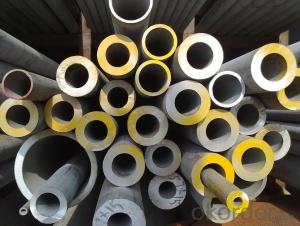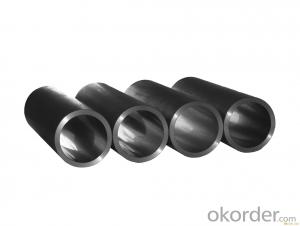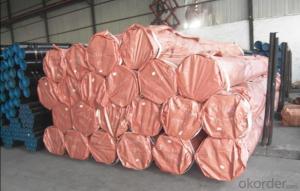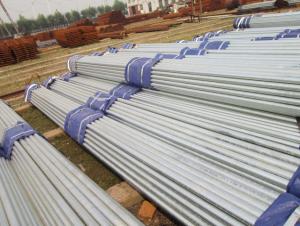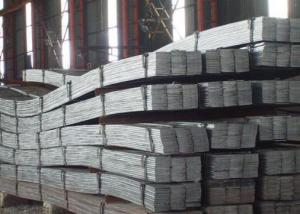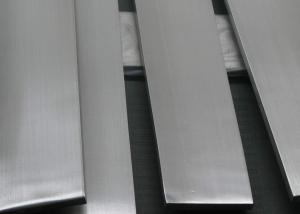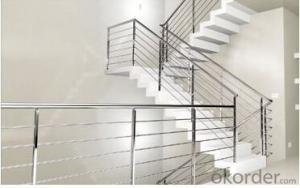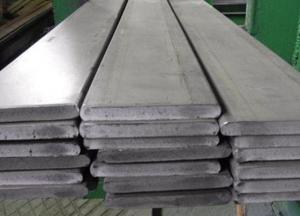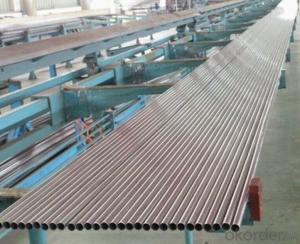seamless 2205 duplex stainless steel tube
- Loading Port:
- China Main Port
- Payment Terms:
- TT OR LC
- Min Order Qty:
- -
- Supply Capability:
- -
OKorder Service Pledge
OKorder Financial Service
You Might Also Like
Specifications
seamless 2205 duplex stainless steel tubeMaterial:304L,316L,316Ti,321,317L,310S,347H,904Letc.
Standard: A269, A213,
Cert:ISO
seamless 2205 duplex stainless steel tube
Material:304L,316L,316Ti,321,317L,310S,347H,904L, 321 stainless steel welded pipe etc.
Standar duplex steel d: A269, A213, A312 201 stainless steel round tube
1. Material | TP304/304L, 316/316L, 310S, 317L, 321, 347H,etc. |
S31803, 32750, etc. | |
2. Sandard | ASTM, ASME, DIN, EN, ISO,JIS, GOST, etc. |
3. Type | Seamless |
4. Size rangetube | OD: from 6mm to 1000mm (NPS from 1/8'' to 40'') |
WT: from 0.7mm to 38mm (Schedule from 5S to XXS) | |
Length: fix length or un-fix length, Max 30meters | |
5. Produce process | Pilgering and cold drawn |
6. Surface process | Pickling and annealing |
AP tube | |
BA tube | |
7. Marking | JW, GRADE, seamless, STANDARD, SIZE, HT NO. |
8. Package | Bundles with waterproof cloth outside. |
or plywood box. | |
9. Min order quantity | 500 KG |
10. Sample | Yes |
11. OEM accepted | Yes |
12. Production capacity | 300 tons per month |
13. Payment term | T/T or L/C. |
14. Certificate | ISO 9001, PED |
15. Third party ertificate | BV, LR, SGS, TUV, CCS, ABS, etc. |
- Q: Can stainless steel pipes be used for brewery equipment?
- Yes, stainless steel pipes can definitely be used for brewery equipment. Stainless steel is a preferred material in brewery setups due to its excellent corrosion resistance, durability, and hygienic properties. It can handle the high temperatures, acidic content, and frequent cleaning required in brewery operations, making it a reliable choice for the construction of pipes used in brewing equipment.
- Q: Can stainless steel pipes be used in food processing industries?
- Stainless steel pipes find widespread use in the food processing industry. This material possesses remarkable durability and resistance to corrosion, making it capable of enduring the challenging conditions and elevated temperatures frequently encountered in food processing plants. Moreover, its non-reactive nature guarantees that it won't interact with food or affect its flavor, rendering it a secure option for transporting diverse food products. Furthermore, stainless steel pipes facilitate effortless cleaning and maintenance, thus ensuring the fulfillment of hygiene standards within the food processing sector.
- Q: What are the temperature limits for stainless steel pipes?
- The temperature limits for stainless steel pipes are dependent on the particular grade of stainless steel that is being utilized. In general, stainless steel pipes have the ability to endure high temperatures, rendering them suitable for a wide array of applications. For austenitic stainless steel grades like 304 and 316, the temperature limits typically span from -250°C to 925°C (-418°F to 1,700°F). These grades showcase outstanding resistance to corrosion and have the capacity to retain their mechanical properties at elevated temperatures. On the other hand, ferritic stainless steel grades, such as 430, possess slightly lower temperature limits, usually ranging from -150°C to 815°C (-238°F to 1,499°F). Although these grades offer commendable resistance to corrosion, they have reduced thermal conductivity and may experience decreased strength at high temperatures when compared to austenitic grades. It is crucial to keep in mind that the temperature limits can differ based on factors such as pipe thickness, surface condition, and the specific application at hand. It is highly recommended to seek advice from the manufacturer or consult relevant design codes to ascertain the precise temperature limits for a particular stainless steel grade and application.
- Q: What is the difference between 316 and 316L stainless steel pipes?
- The main difference between 316 and 316L stainless steel pipes is the carbon content. 316L has a lower carbon content, making it more resistant to corrosion and suitable for applications where welding is required. It also has a higher creep, stress-to-rupture, and tensile strength, making it a preferred choice in high-temperature environments.
- Q: Disadvantages of stainless steel tubes
- Stainless steel pipe is a kind of more durable pipeline material. But its price is higher, and the construction process requirements are relatively high, but its material strength is hard, the field processing is very difficult. Therefore, in the decoration project, the probability of choice is low.
- Q: How do you prevent vibration in stainless steel pipes?
- To prevent vibration in stainless steel pipes, there are a few measures that can be taken. Firstly, proper support and anchoring of the pipes should be ensured to minimize movement. This can be achieved by using sturdy brackets, clamps, or hangers that are designed to absorb vibration and maintain stability. Additionally, the installation of vibration isolators or dampeners can significantly reduce vibrations by absorbing and dissipating the energy. These isolators can be in the form of rubber pads, spring hangers, or neoprene mounts, depending on the specific application. Lastly, considering the fluid flow characteristics and adjusting the pipe layout to avoid excessive turbulence or flow-induced vibrations can also help prevent vibration in stainless steel pipes.
- Q: What are the factors to consider when selecting stainless steel pipes for a specific application?
- When selecting stainless steel pipes for a specific application, several factors need to be considered to ensure the right choice is made. 1. Corrosion Resistance: Stainless steel is known for its exceptional resistance to corrosion, but different grades offer varying levels of protection against specific corrosive environments. The type of corrosive agents present in the application, such as chemicals, moisture, or high temperatures, should be carefully evaluated to select a stainless steel grade that can withstand them effectively. 2. Temperature and Pressure: Stainless steel pipes are used in a wide range of temperature and pressure conditions. The selected grade must have the necessary strength and resistance to handle the specific temperature and pressure levels required by the application. Higher temperatures may require grades with increased heat resistance, while high-pressure environments may benefit from pipes with higher tensile strength. 3. Material Compatibility: In some applications, stainless steel pipes may come into contact with other materials or substances, such as liquids or gases. It is crucial to consider the compatibility of the stainless steel with these materials to avoid any potential chemical reactions, contamination, or degradation. Compatibility testing or consulting with experts can help determine the best choice of material. 4. Size and Dimensions: The size and dimensions of the stainless steel pipes should match the requirements of the application. This includes considering the diameter, thickness, and length of the pipes. Proper sizing ensures optimal flow rates, structural integrity, and ease of installation. 5. Cost: Cost is always a factor to consider in any decision-making process. Different stainless steel grades vary in price, and it is essential to balance the desired properties with the available budget. While cost should not be the sole determining factor, it is important to find a stainless steel pipe that meets the required specifications without exceeding the allotted budget. 6. Standards and Certifications: Depending on the application, certain standards and certifications may be required, such as ASTM, ASME, or ISO. These standards ensure that the stainless steel pipes meet specific quality and performance criteria. It is crucial to select pipes that comply with the necessary standards and have appropriate certifications to ensure reliability and safety. 7. Maintenance and Durability: Consider the maintenance requirements and expected lifespan of the stainless steel pipes. Some applications may require regular cleaning, inspection, or maintenance, while others may need pipes with long-term durability and resistance to wear and tear. By carefully evaluating these factors, one can make an informed decision when selecting stainless steel pipes for a specific application, ensuring they meet the necessary performance, quality, and safety requirements.
- Q: Can stainless steel pipes be used for underground gas lines?
- Yes, stainless steel pipes can be used for underground gas lines. Stainless steel is known for its excellent corrosion resistance, which makes it a suitable choice for underground applications where the pipes are exposed to moisture and various chemicals present in the soil. Stainless steel pipes also have a high strength-to-weight ratio, making them durable and able to withstand the pressure and environmental conditions associated with underground gas lines. Additionally, stainless steel pipes have a long lifespan and require minimal maintenance, making them a cost-effective and reliable option for underground gas distribution systems.
- Q: Can stainless steel pipes be insulated with polyethylene-terephthalate glycol?
- No, stainless steel pipes cannot be insulated with polyethylene-terephthalate glycol.
- Q: What's the difference between stainless steel decorative pipes and polished stainless steel pipes?
- Polished stainless steel pipe is different from stainless steel decorative tube, generally speaking, the material is better. Yes, the steel tube just appeared is a bit rough and not smooth enough, so it needs polishing to make it appear smooth. Mostly Austrian stainless steel, nickel, corrosion resistance, but the price is expensive, mainly for industrial and outdoor decoration.
Send your message to us
seamless 2205 duplex stainless steel tube
- Loading Port:
- China Main Port
- Payment Terms:
- TT OR LC
- Min Order Qty:
- -
- Supply Capability:
- -
OKorder Service Pledge
OKorder Financial Service
Similar products
Hot products
Hot Searches
Related keywords
